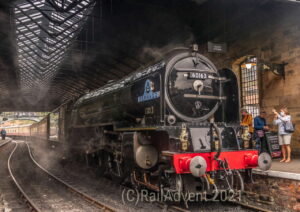Network Rail has opened a ballot for members of the public to visit to the Grade II-listed Birmingham New Street power signal box (PSB).
The Birmingham city centre railway landmark finished 56 years of duty in December.
The tour will be available to a total of sixty people on five 45-minute tours starting every hour from midday on Friday 31 March.
Due to anticipated high demand, tickets will be allocated by a random ballot which can be entered here. The ballot will close on Friday 17 March, following which Network Rail will contact the successful entrants.
Railway staff with more than seventy years’ combined experience of working in and around the operational signal box will lead the tour of three of the iconic building’s five floors. Visitors will have the chance to learn the basics of railway signalling, how the signal box worked and discover more about plans for the building’s future.
Network Rail decided to open up the building for railway enthusiasts and architecture fans alike after its closure on Christmas Eve generated interest. This latest look behind the scenes follows the hugely successful tours of a forgotten underground tunnel linking New Street station to the Mailbox building which took place as part of Birmingham Heritage Week 2021.
Built over five floors in the 1960s, unfortunately the building does not meet modern day accessibility standards so the tours will not be accessible to people unable to use stairs. The operational spaces and some rooms in the building included on the tour are small, so each group will have a maximum of twelve people to give enough space for everyone to enjoy their visit in comfort.
At the building’s peak, its team of dedicated signallers directed up to 1,200 trains by every day, adding up to tens of millions of trains over its operational life. Last Christmas, however, responsibility for all train movements through Britain’s busiest station outside of London was passed over to the West Midlands Signalling Centre in east Birmingham, with 1960s analogue technology making way for digital.
The signal box is one of Birmingham’s best surviving examples of Brutalist architecture, defined by imposing facades built from pre-cast concrete. Its insides were also unique, as the only surviving signal box to use the Westpac Mk 1 signalling system until it closed.
Built as part of the West Coast main line route modernisation, the Birmingham box was one of four power signal boxes in the West Midlands, replacing 64 manually operated signal boxes in the 1960s. It was given Grade II listed building status in 1995 because of its ‘dramatic and exceptional architectural quality’ and ‘strongly sculptural form’.
After the tours take place, work will start on the next phase of the building’s life, as it becomes a training centre for the next generation of railway signallers.
Denise Wetton, Network Rail’s Central route director, said: “We were overwhelmed by the response when we announced that the Birmingham power signal box would be closing, so it felt like the right thing to do to open up the doors and show off this local landmark which played a crucial role for six decades at the heart of Britain’s railway network.
“I hope that people will enjoy this rare look behind the scenes and that it inspires people not only to learn about the important part this building and the people who worked in it played in the railway’s past – but also discover more about how we’re improving the railway for the future, too.”





Responses